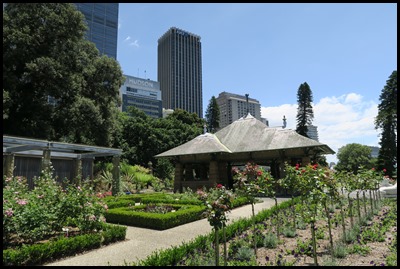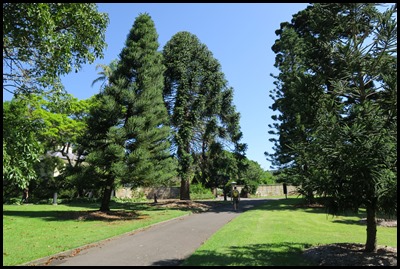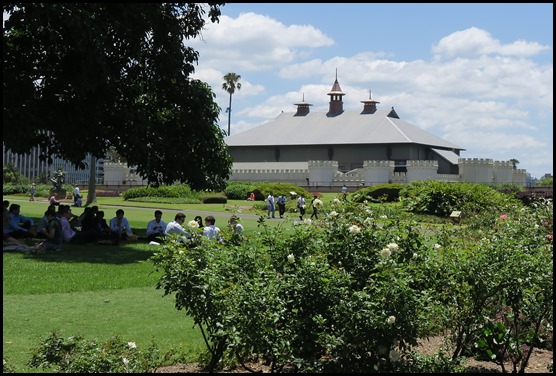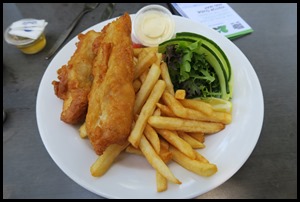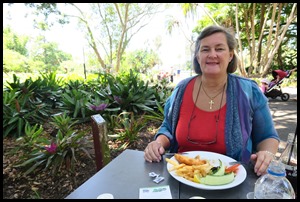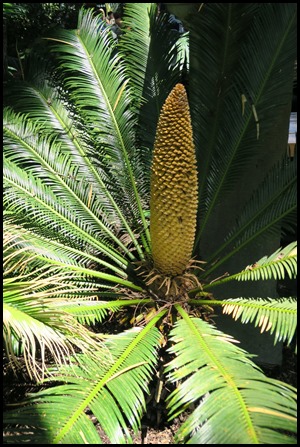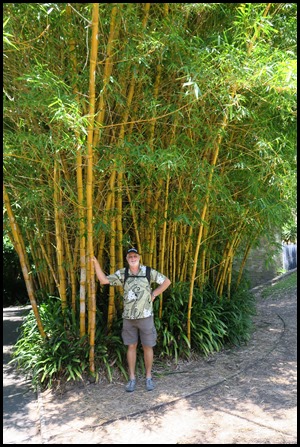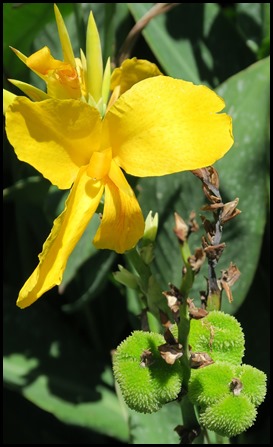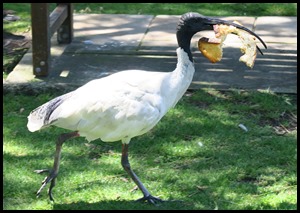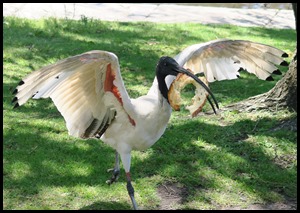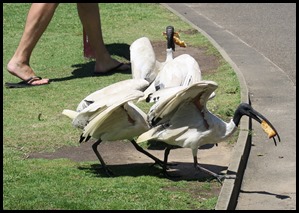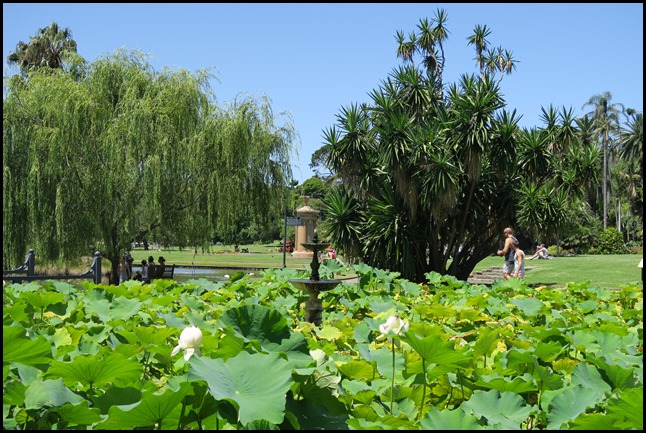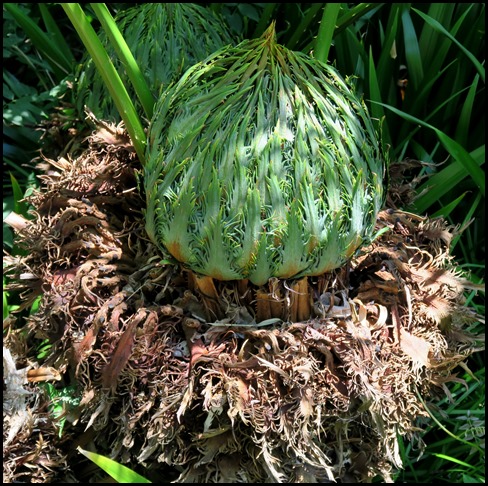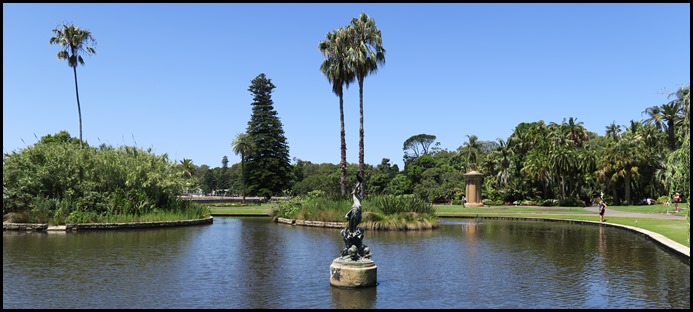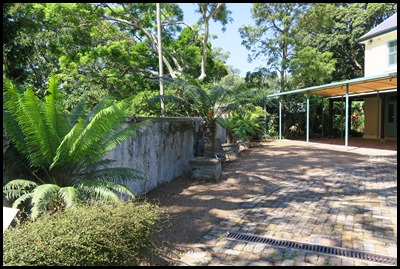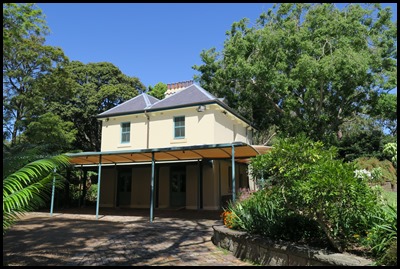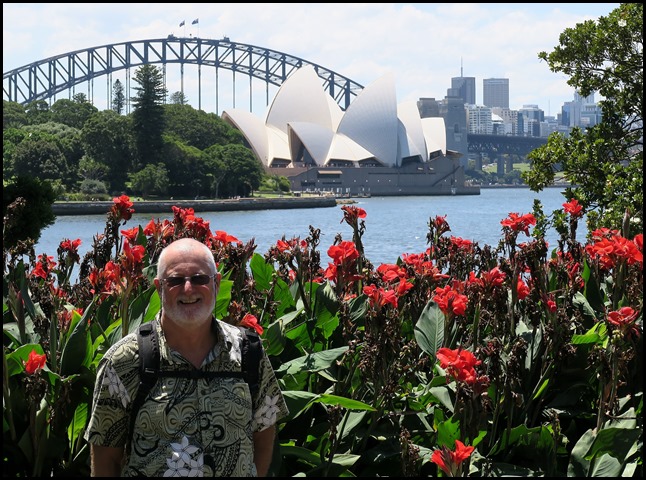Botanic Bimble

|
A Long Bimble
Around the Royal Botanic Gardens of Sydney
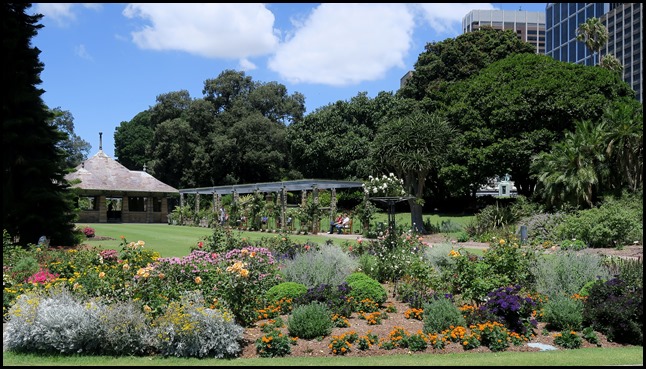 The Royal Botanic Gardens is a major botanical garden
located in the heart of Sydney. Opened in 1816, the garden is the oldest
scientific institution in Australia and one of the most important historic
botanical institutions in the world. It is open every day of the year and access
is free. Its stunning position on Sydney Harbour and immediately adjacent to the
Sydney CBD, the Sydney Opera House and the large public parklands of The Domain
ensure it is one of the most visited attractions in Sydney.
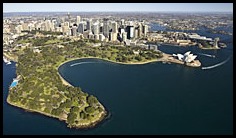
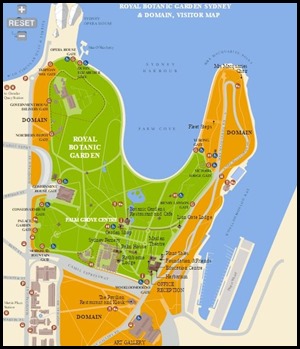  Hamilton Lund and B E Richard’s
aerial shots and the RBG Map.
Location:
Situated immediately southeast of the Sydney Opera House and curved around Farm
Cove, the gardens occupy seventy four acres and are bordered by the Cahill
Expressway to the south and west, Art Gallery road to the east, and Sydney
Harbour to the north.
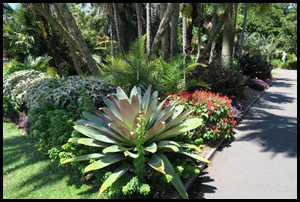 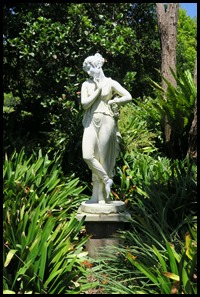 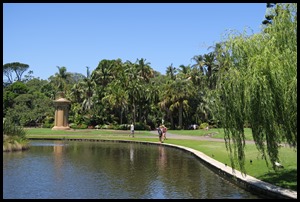 Beginnings: The first farm on the Australian continent, at Farm Cove, was established in 1788 by Governor Phillip. Although that farm failed, the land has been in constant cultivation since that time, as ways were found to make the relatively infertile soils more productive. The Botanic Gardens were founded on this site by Governor Macquarie in 1816 as part of the Governor's Domain. Australia's long history of collection and study of plants began with the appointment of the first Colonial Botanist, Charles Fraser, in 1817. The Botanic Gardens is thus the oldest scientific institution in Australia and, from the earliest days, has played a major role in the acclimatisation of plants from other regions. After a succession of colonial botanists and superintendents, including the brothers Richard and Allan Cunningham, both also early explorers, John Carne Bidwill was appointed as the first Director in 1847.
The Gardens are a lovely place to walk in – or jog as some are wont to do.
Many city workers take their lunch and sit in the shade of one of the many trees. 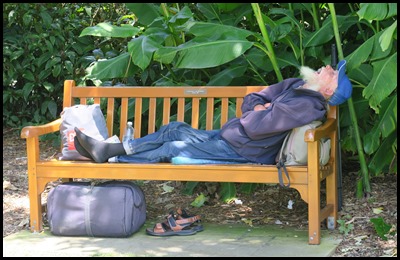 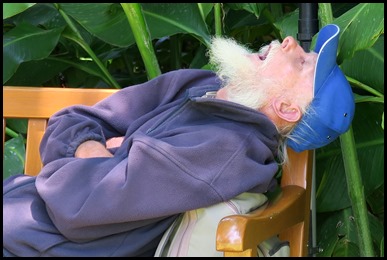 Some
catch some Zzzz’s.
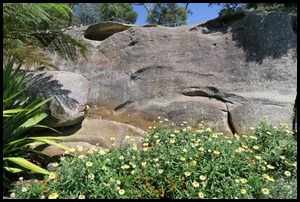 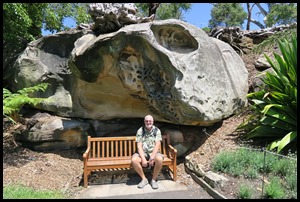 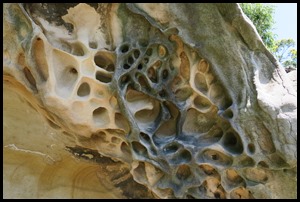 Admire
the sandstone.
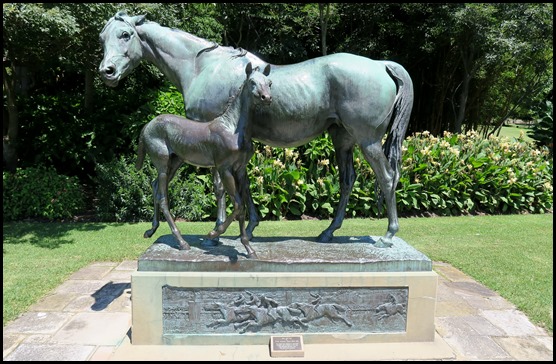 Enjoy
statues like this Mare and
Foal.
 Explore by train.
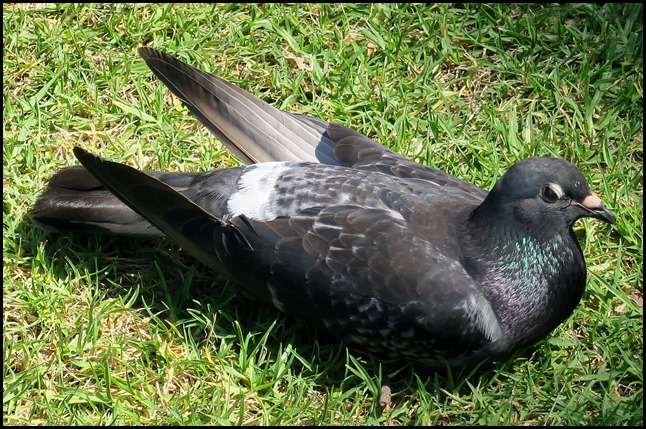 Lay
in the sun.
Lunch at the cafe.
We saw rare plants, huge bamboo and many blooms.
Mine, mine, not for long.
The lily pond.
Cycas hainanensis from China. Very restricted in the wild surviving mainly in cultivation.
The main pond.
The Macquarie Wall. This section of the wall seen to the left of Lion Gate House is one of the earliest surviving structures of European settlement of Australia, it was conserved and stabilised in 1989. Lion Gate House, this heritage listed cottage was built in 1878 as a residence for the Overseer or Head Gardener. It was originally known as Cottage 2 or Middle Lodge but was renamed Lion Gate Lodge after the lion and lioness statues by the gates. The gardens around the house are landscaped in a cottage garden style. The fashion for cottage gardens was started by mid-Victorian painters who romanticised the idea of cottage life with gardens that were perpetual perfusions of pretty flowers. Lion Gate House can be hired for small functions.
ALL IN ALL A MAGNIFICENT GARDEN BEAUTIFULLY LAID OUT |
